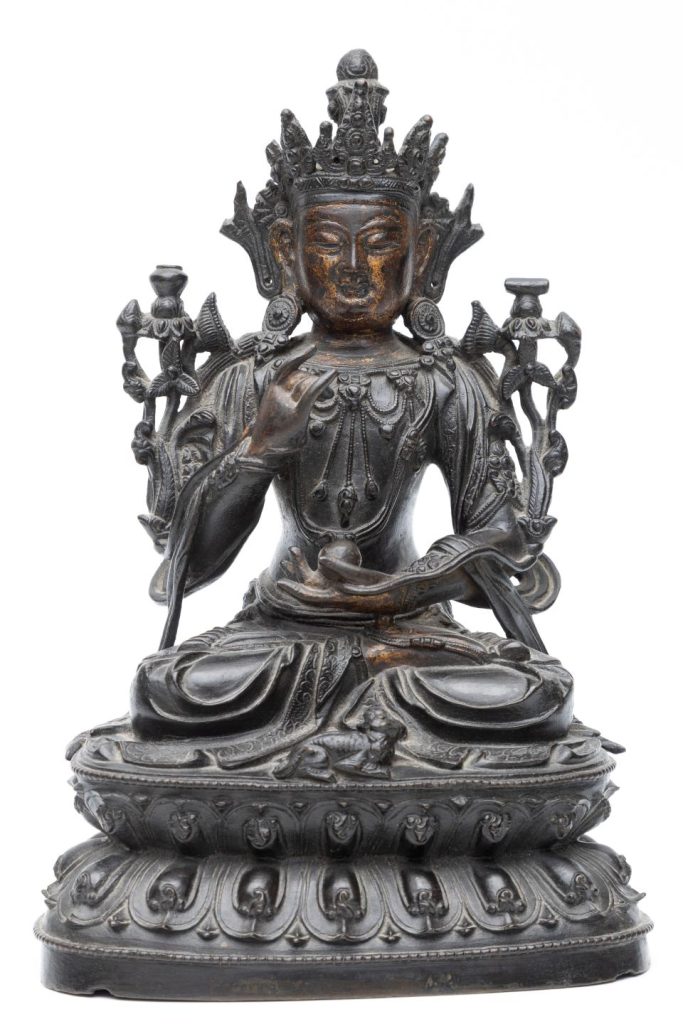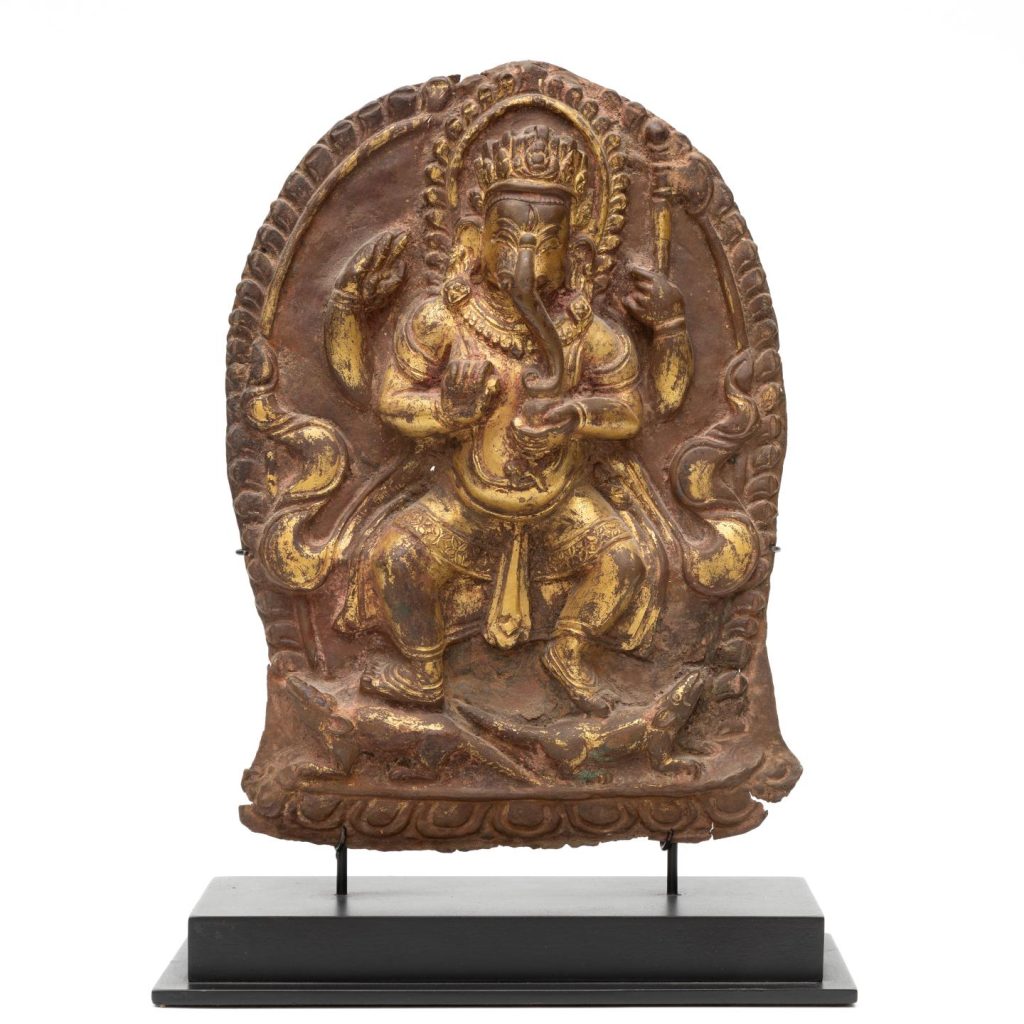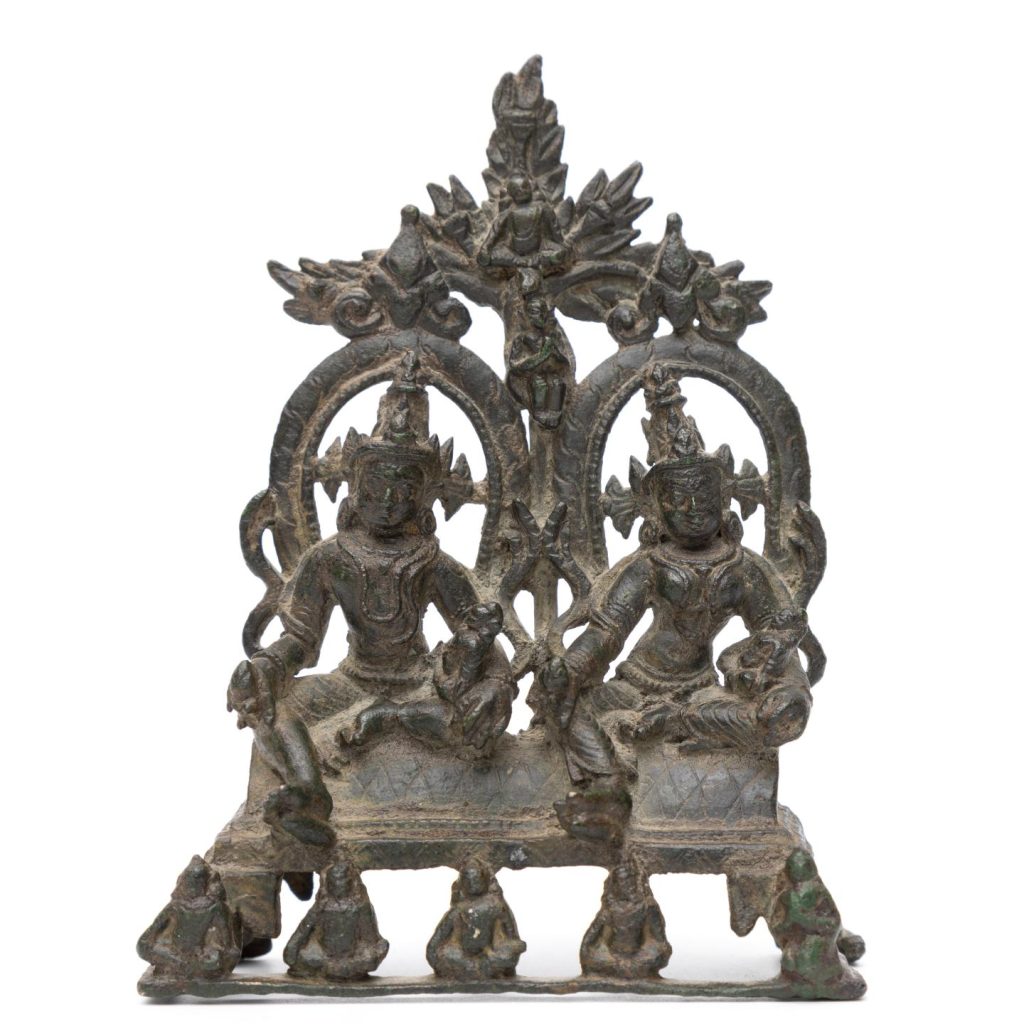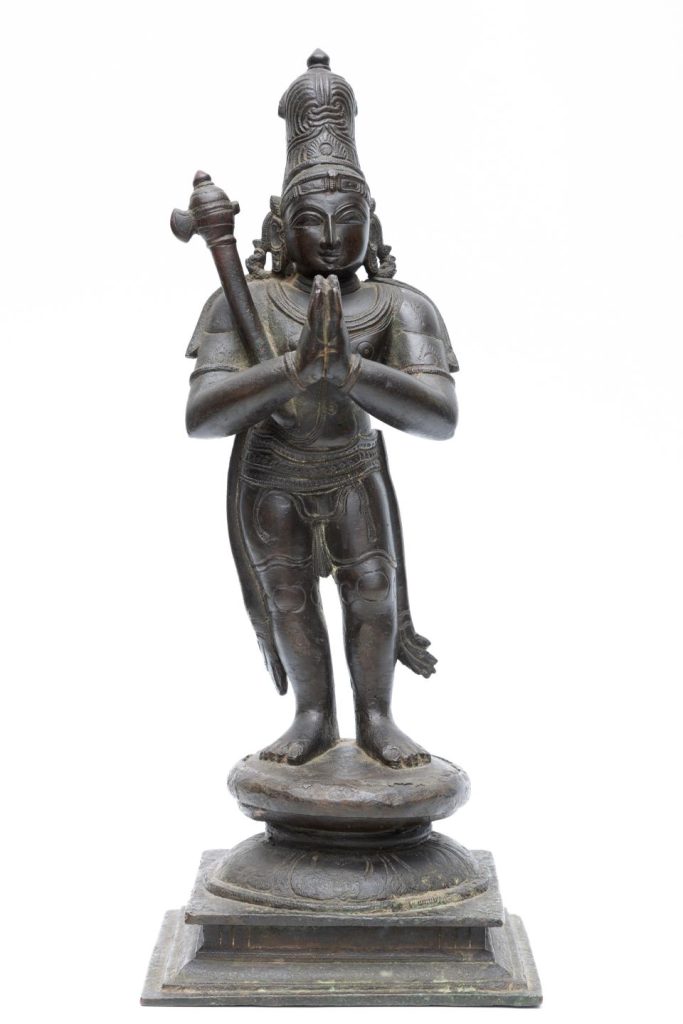The Collection of Asian art by Erik Maten and Hans van der Veer
Collaboration between the Royal Association of Friends of
Asian Art and Veilinggebouw de Zwaan
This is the second time in a year that the Royal Association of Friends of Asian Art has received a group of works of art that can be auctioned for a good cause.
This time it is Erik Maten (1944) and his partner Hans van der Veer (1951) who selflessly donate their entire art collection to the KVVAK during their lifetime.
They have been members of the Association for many years, whose collection is housed in the Rijksmuseum in Amsterdam; masterpieces from this collection are exhibited in varying arrangements in the Asian Pavilion of the Rijksmuseum, which was built especially for this highly regarded collection.
Maten (Indologist and lawyer) and Van der Veer (metalographer) primarily collected South and South-East Asian sculptures, especially bronzes, supplemented with a number of tangkas and Japanese scroll paintings and prints.
The interest arose from an early age, especially with Erik Maten, who studied Sanskrit at the University of Utrecht from 1964 to 1970 with the well-known professor Gronda, with a minor in Art History at the Municipal University of Amsterdam with the striking professor Van Lohuizen. He also studied law at the University of Amsterdam. The partners met in Arnhem in 1974 and have collected together since the first purchase. That first acquisition was a large stone, Thai Buddha head, purchased at the Siam gallery run by ex-pilot Frits Vlieger. They bought from him more often, ‘we were allowed to pay in terms, which is important if you are a starting collector and don’t have much salary yet.’
Another favorite is a Gandhara stucco head, which they bought from antique dealer A. Vecht in Amsterdam’s Spiegelstraat. Around the corner was art dealer Paul Rutten, from whom they acquired art from the Himalayan region. The collectors will keep the Gandhara stucco head and two gilded Tibetan Buddhas that they found there with them for the time being, although they now have considerably less space in the care home in Deventer where they recently moved.
In the long term, these will also be transferred to the KVVAK, like all more than a hundred objects that formed their collection.
Jean Nies in Brabant was also a trader they liked to visit; they bought various statues from Burma, now Myanmar. India was a popular travel destination, the collectors visited the country no fewer than thirteen times with a group from the India Institute in Amsterdam: ‘Experts always traveled with us, you learned so much from them – that has contributed enormously to our knowledge.’
Three considerations guided their method of collecting: style characteristics, iconography and the authenticity of acquired pieces.
Hinduism has a large number of deities in a variety of manifestations, and they found it interesting to show that diversity in their collection.
For example, there is an 18th century bronze statue of Candikeswara from South India, Nayak period (lot 3705) and a North India bronze group of Hariti and Pancika, Pala Period, ca. 12th century (lot 3703).
A Nepalese repoussé depicting the elephant god Ganesha (lot 3701) and a refined Chinese bronze statue of Manjushri from the Ming period with inscription on the base (lot 3700).




Over the years, traveling and purchases has become less, partly due to the deteriorating health of both collectors. Years ago they agreed that the KVVAK, of which they have been members for so long, would receive their entire art collection: ‘Our pieces are in good hands with the Association,’ say both generous donors.
It is all the more generous that they fully agree to the auctioning of the pieces that do not fit within the KVVAK collection. The proceeds may be spent freely and at will: ‘We fully trust that the proceeds will be well spent, whether on research, education or acquisitions. We are pleased that our precious works of art can, directly or indirectly, help the Association to continue its policy.’
Text: Renée Steenbergen
vice-chairman of the Royal Association of Friends of Asian Art

